California Naturalist Outing
Marvin Braude Mulholland Gateway Park and Garapito Canyon Trail
10:30 a.m.-1 p.m.
- Route: Approaching from the parking area up to the fire road to the trail head.
- Weather: Warm and slightly humid. 69°F at start 78°F at end.
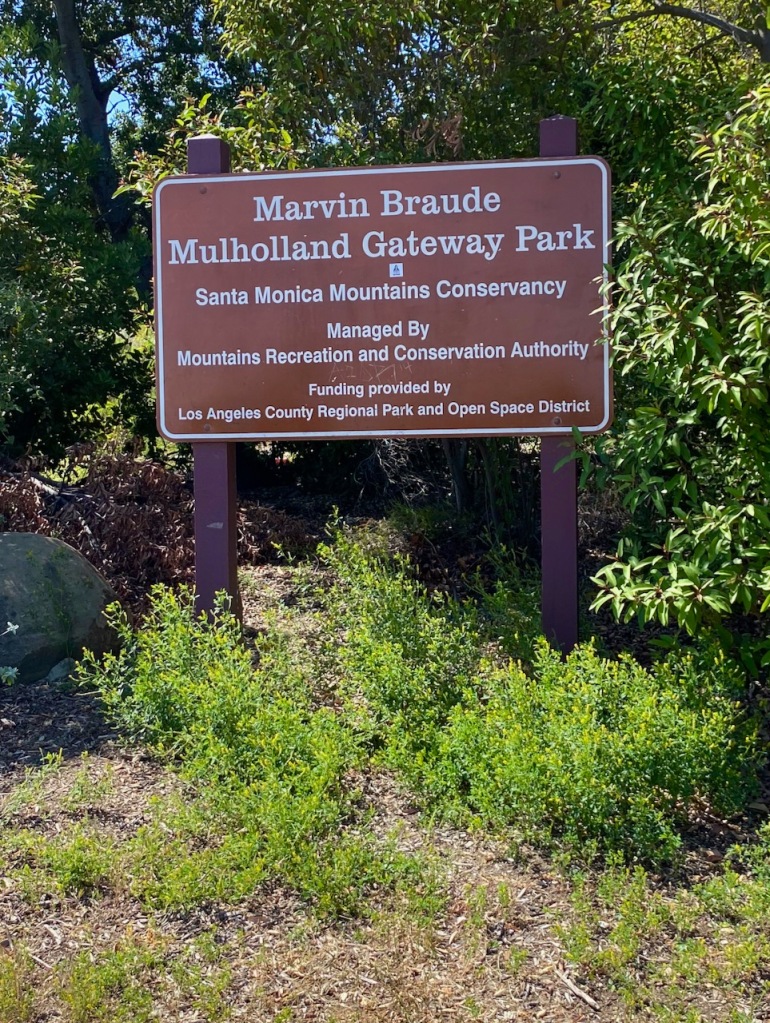
Striking out on a mid-week trek, I wanted to observe the native plants and habitats of the Santa Monica Mountains in May. The weather was still cool and slightly overcast in the morning (what the weatherman calls May grey) but it had burned off by the time I arrived. You could still get a feel for the moisture in the air as you moved through it.
Invasive Species
One of the first things I noticed was how profuse the invasive weeds were. Much like what I observed in the Sepulveda Basin the day before, Maltese Star Thistle (Centaurea melitensis) and annual yellow sweet clover (melilotus indicus) were all along the entry trails and sides of the fire roads. This was in addition to the profusion of yellow mustards. I didn’t stop to check closely, but it looked like the same short pod mustard variety growing in the valley open spaces below. Here it was all along the roads and trails. My guess is that it is easily carried by vehicles and feet passing by once it’s set seed.
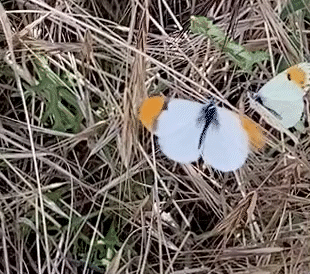
While the sweet clover and thistle looked parched (likely with the now lower soil moisture) the mustard was a lush, turgid green seemingly full of moisture thanks to their long taproots. I had to resist the urge to pull them as I walked by. Maybe a silver lining too so many flowering invasives, the butterflies and European honeybees seemed to be enjoying them. The butterflies looked to be variable checkerspot (Euphydryas chalcedona) which was in great profusion flittering from mustard flower to mustard flower. I wasn’t measuring, but with every pace along the entire journey, I observed no less than one checkerspot, in many of those paces seeing 2 or three in the span of my stride.
Happy buckwheat and sage
Other plants that looked happy in the space were the Buckwheat (Eriogonum fasciculatum) and the sages (California Sage – Artemisia californica and the Black sage – Salvia mellifera). Under full sun and on the flat surfaces of the hilltops, the buckwheat was in full bloom. So too were those on the south-facing slopes. The flowers looked young and fresh in the season. Around them, the buckwheat hosted many bees, grasshoppers, hoverflies, and butterflies. Those plants on the north-facing aspect seemed to be having a slower start to their season.
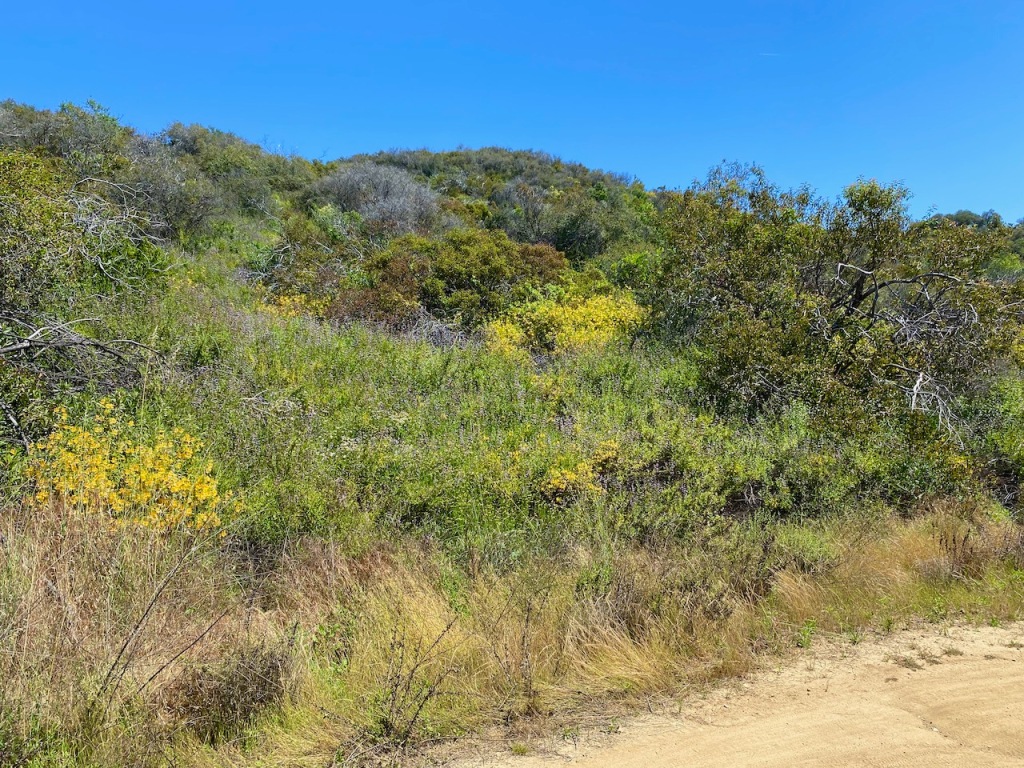
So too were the sages, both black and California sage. Much of the black sage had been in bloom for several weeks with, now, tired-looking flowers. The “cowboy cologne” California sage was looking resplendent in the season, though not yet in flower. My guess is the late warmth of spring is causing it to lag. This follows with my observations of other similar plants that I check weekly in the basin. I’m seeing what seem to be similar seasonal delays in setting flowers. The plants, however, look turgid with moisture and smelled heavenly when brushed by them.
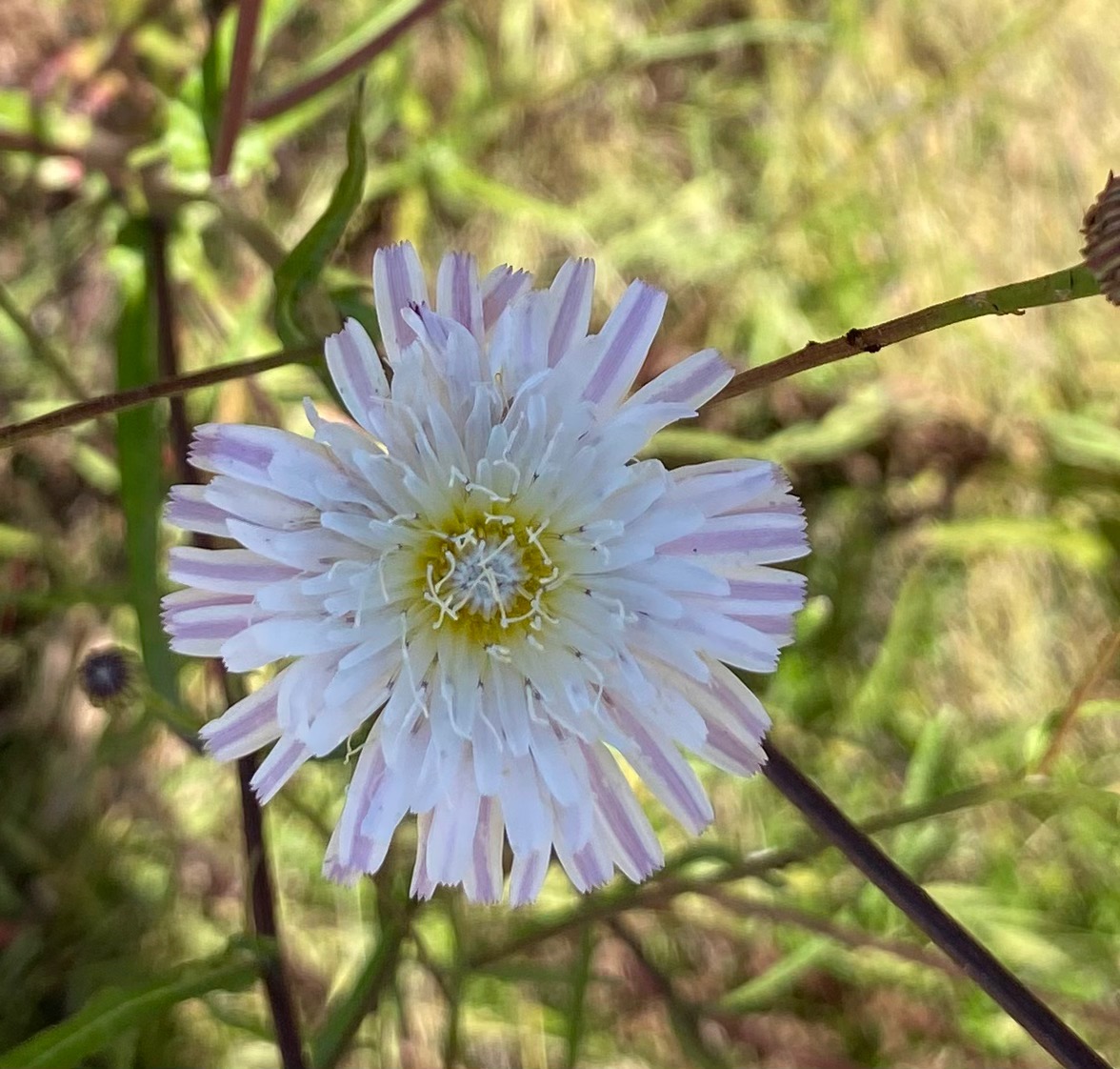
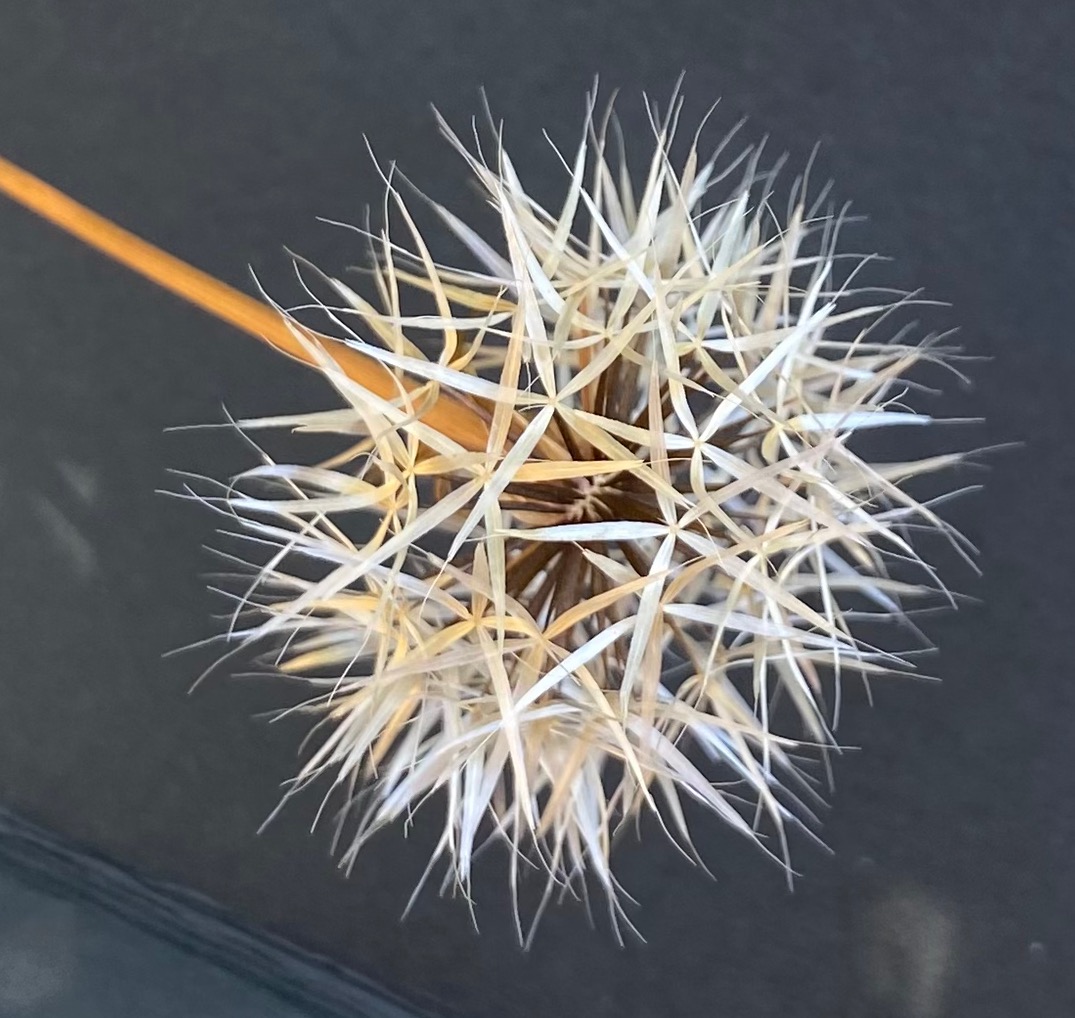
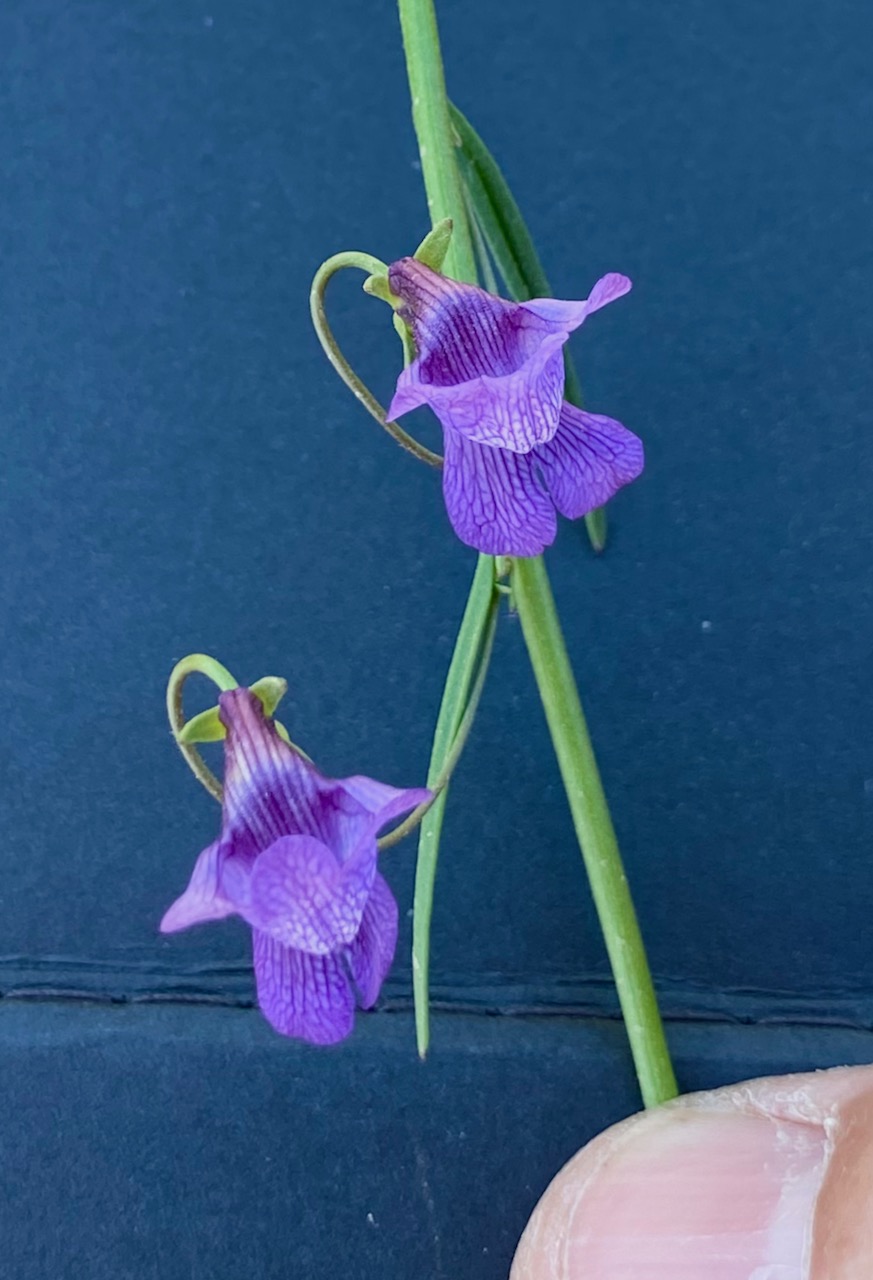
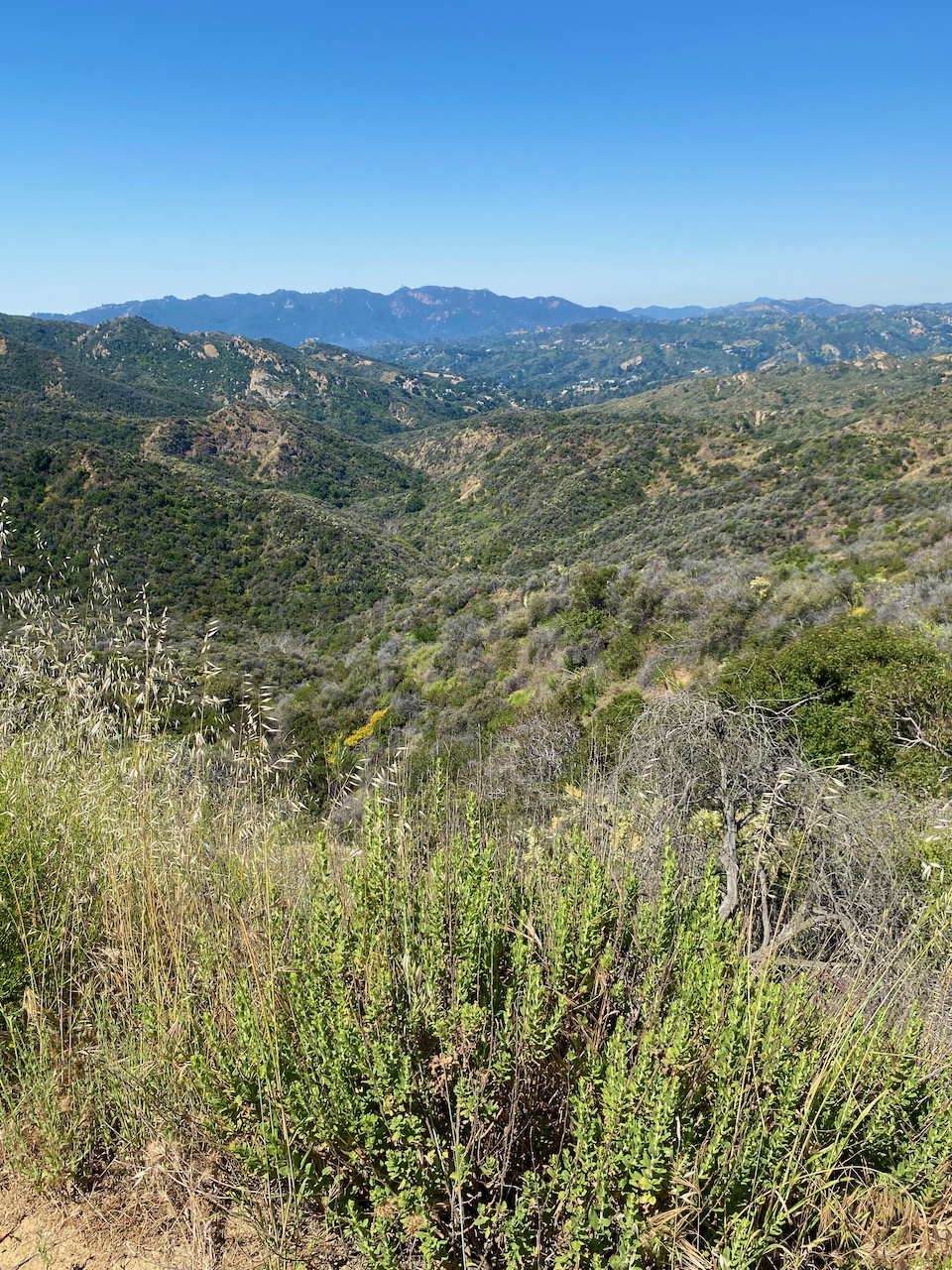
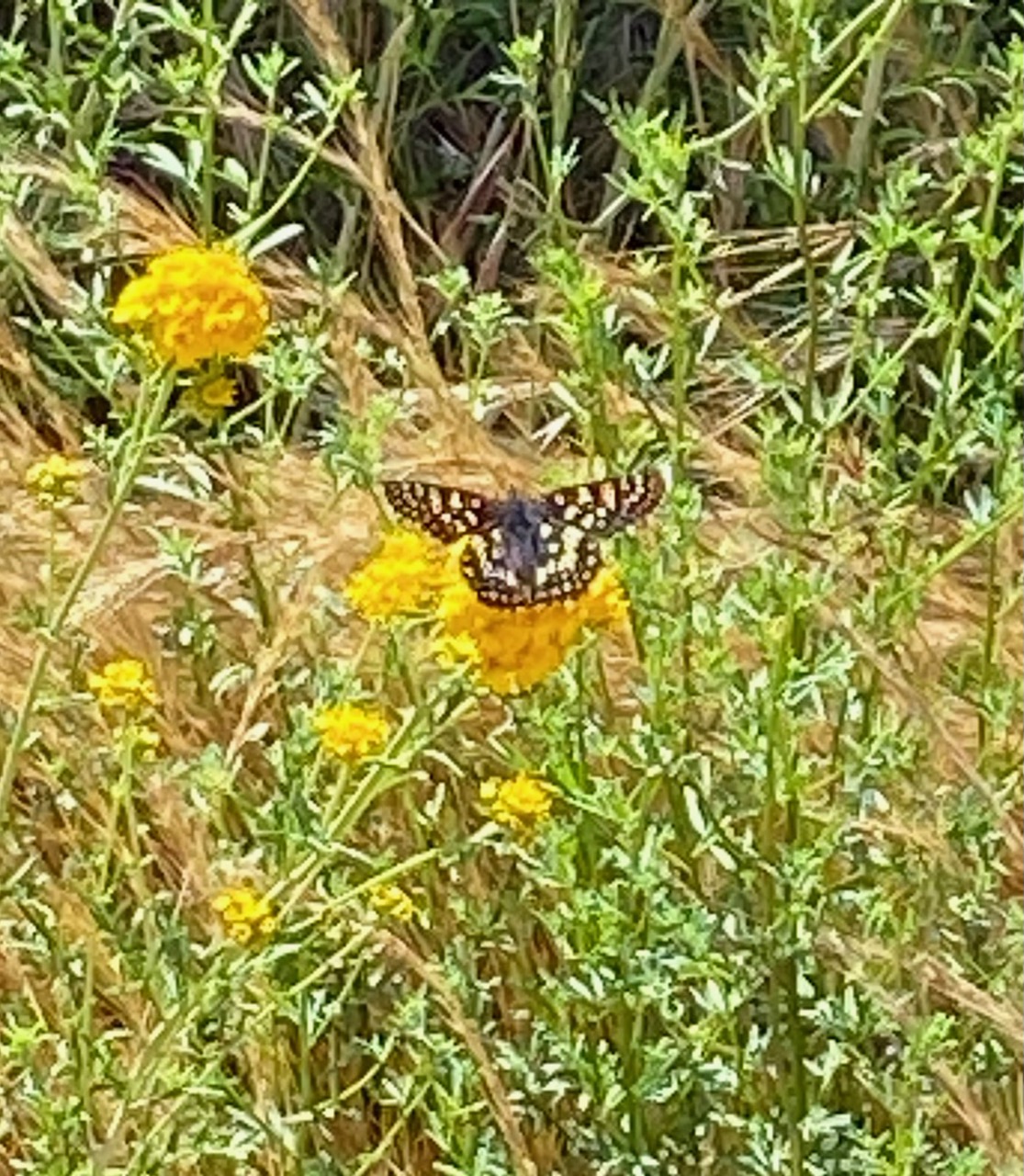
Amongst the sage and buckwheat were several of what looked like Rock Phacelia or maybe Mountain Phacelia (Phacelia californica or Phacelia imbricata ssp. imbricata) happily inhabiting the space growing profusely with the other sage/chaparral plants in the community. Another neat find was the deerweed (Acmispon glaber) thriving and in bloom with columns of small yellow flowers. This plant was also all along the side of the fire road and steep slopes of the hill seemingly in bloom on the southern aspects and ready to bloom on the others.
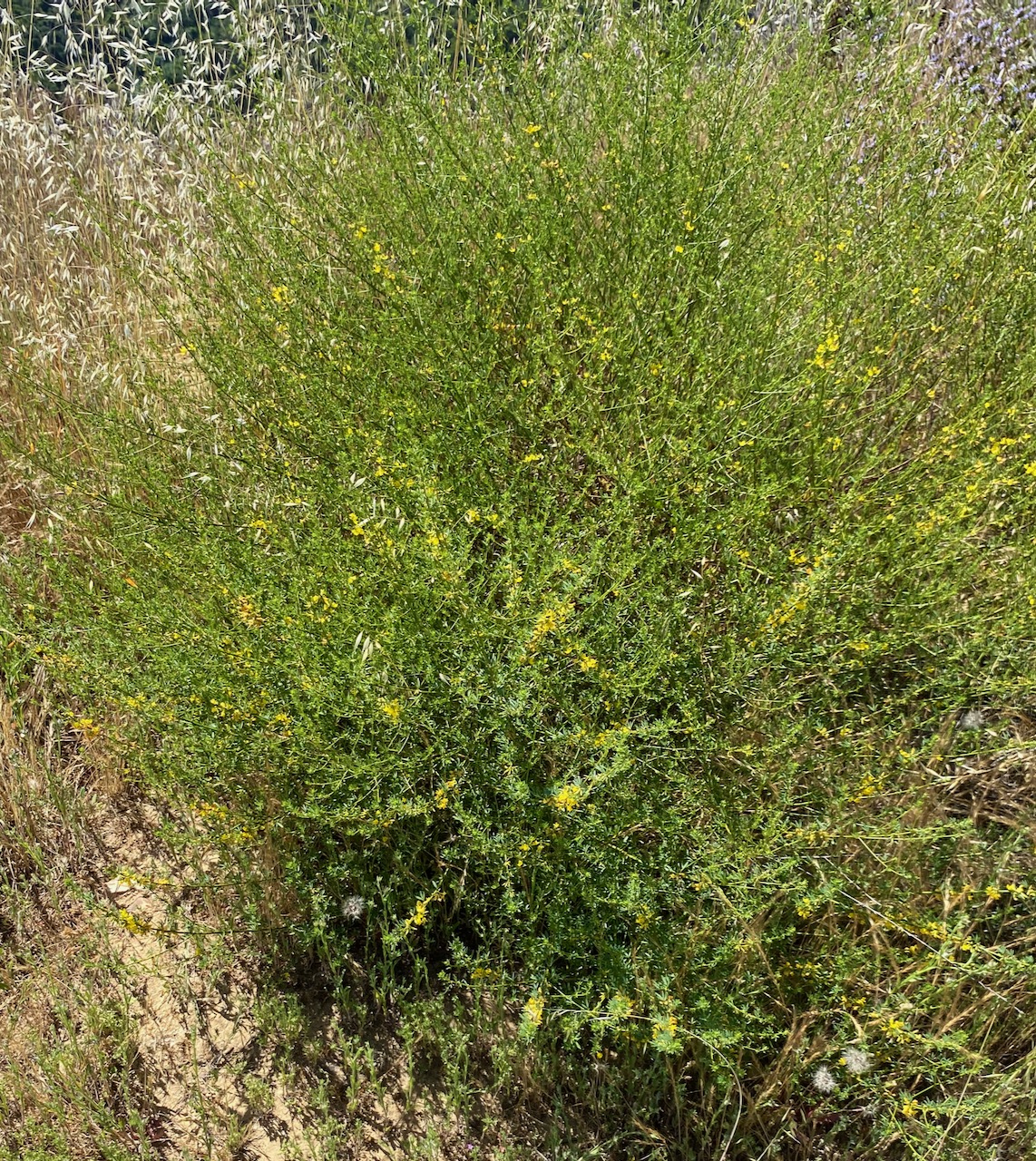
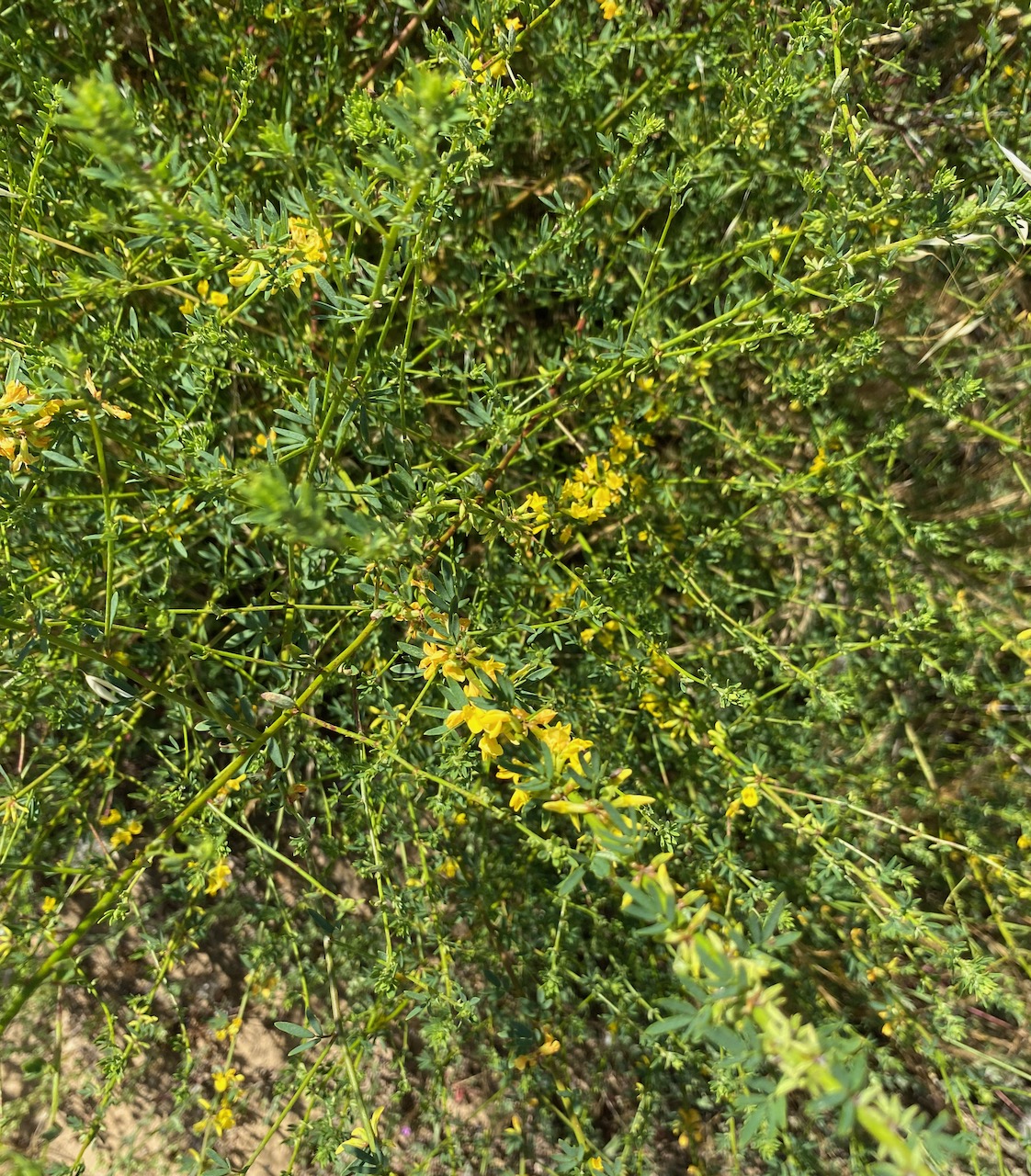
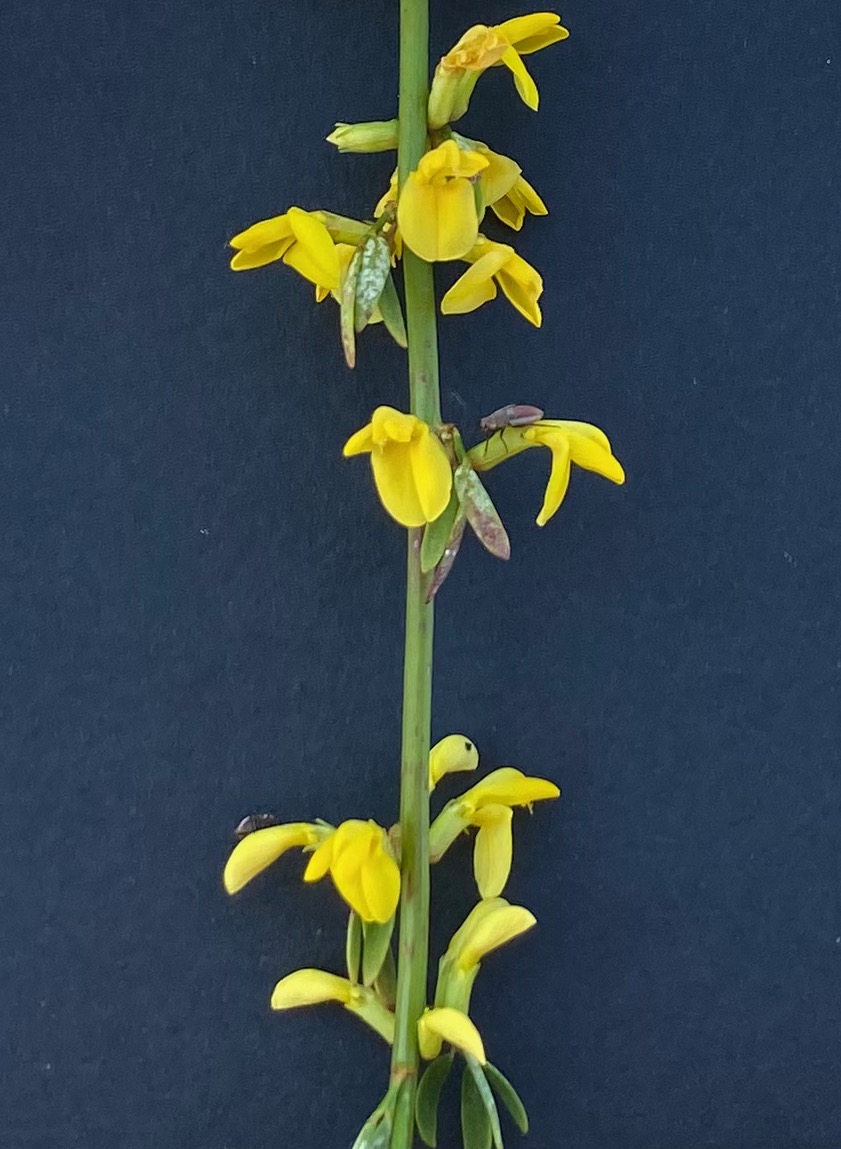
Not surprising was the volume of invasive grasses and oats all along the road and trails. It was hard to quantify the types or varieties throughout but much of it was dry and setting seed, already through its early growing season. I would like to go back and collect some samples from the space to compare in the future to see if they remain, take hold, or get eradicated. I suspect they will continue to spread with no native competition.
Read: Becoming A Naturalist
Sage Chaparral Communities
All along the hillsides of the fire road, there were many large laurel sumacs, lemonade berries, and toyons—each in various stages of bloom. I stumbled upon a lemonade berry on a northern aspect already setting its sticky and hairy fruit. Having grown these plants from seed, I have a fondness for them. Chamise, too, was getting ready to explode in bloom on the northern aspects. Many of the plants were covered in creamy white and green flower buds just on the edge of the opening. Another plant in this community ready to burst was the hairy ceanothus (Ceanothus oliganthus).
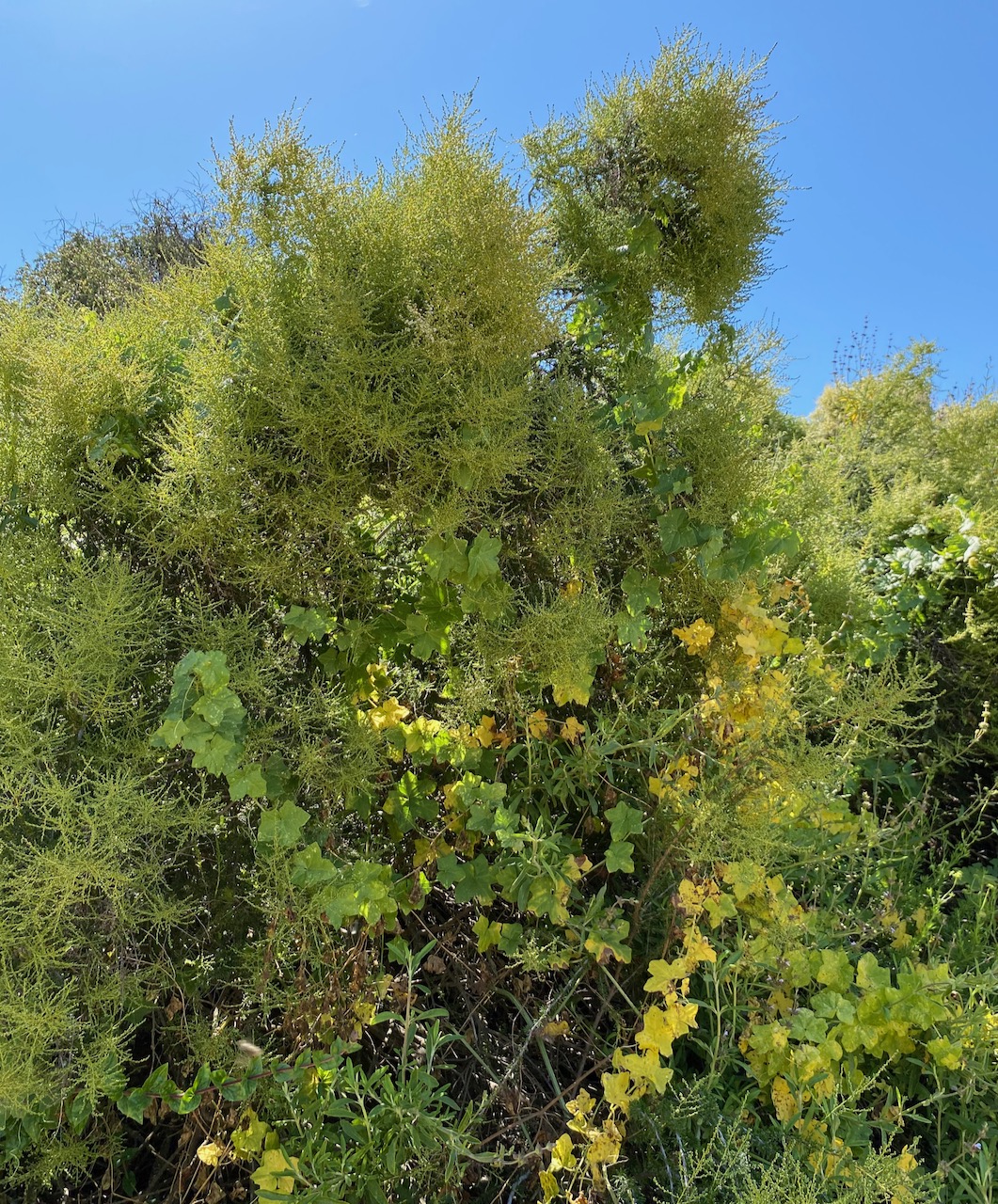
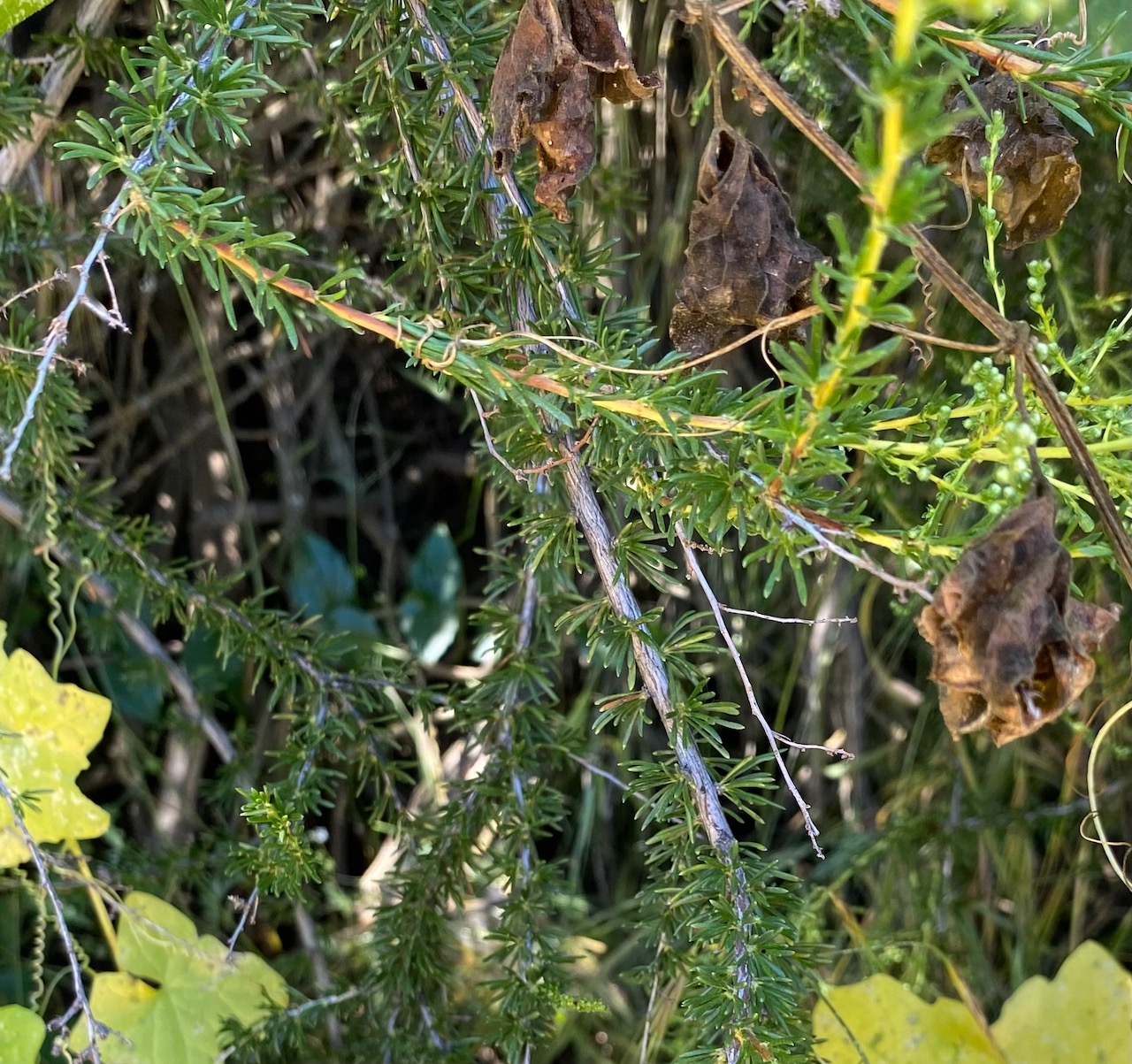
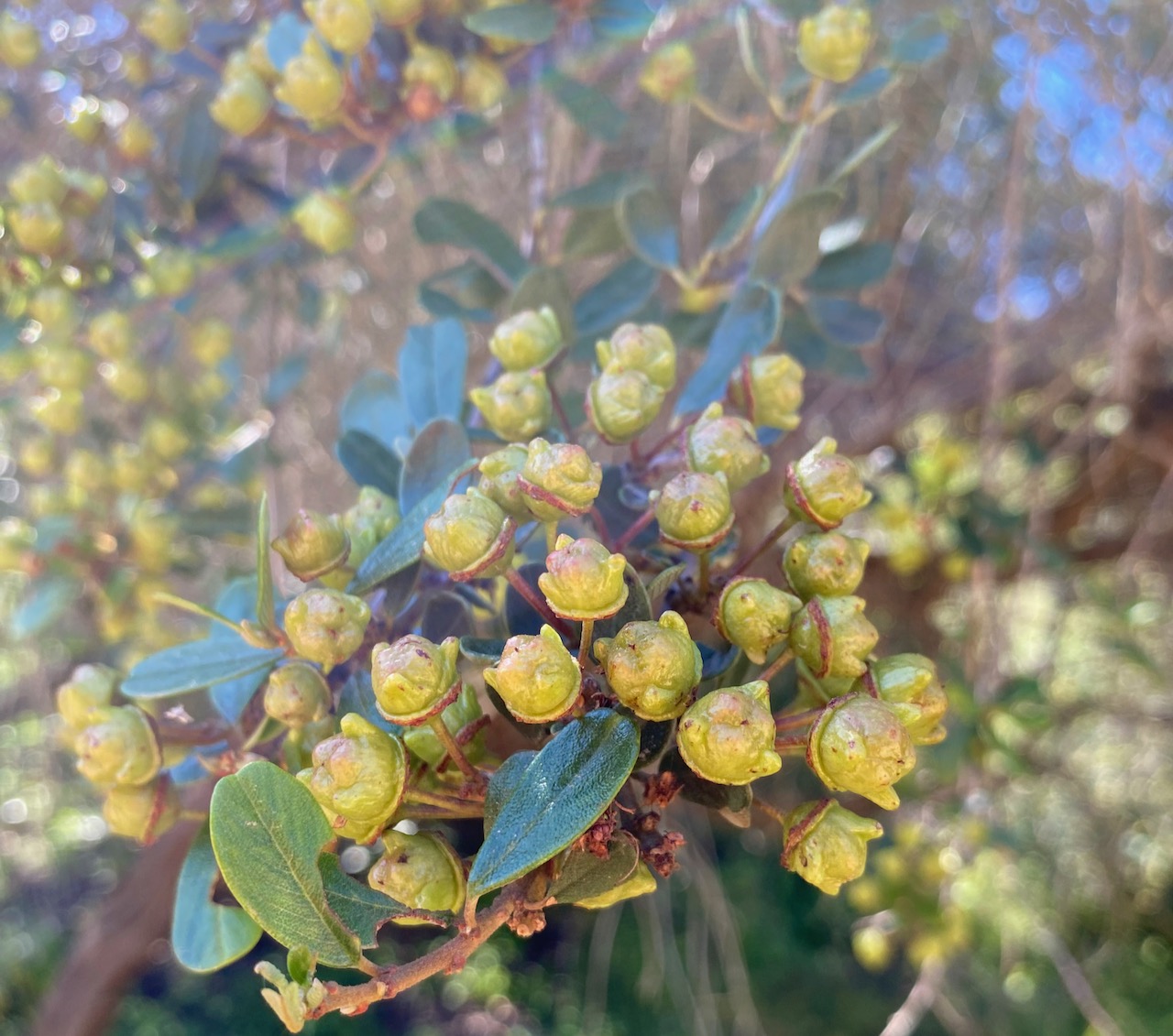
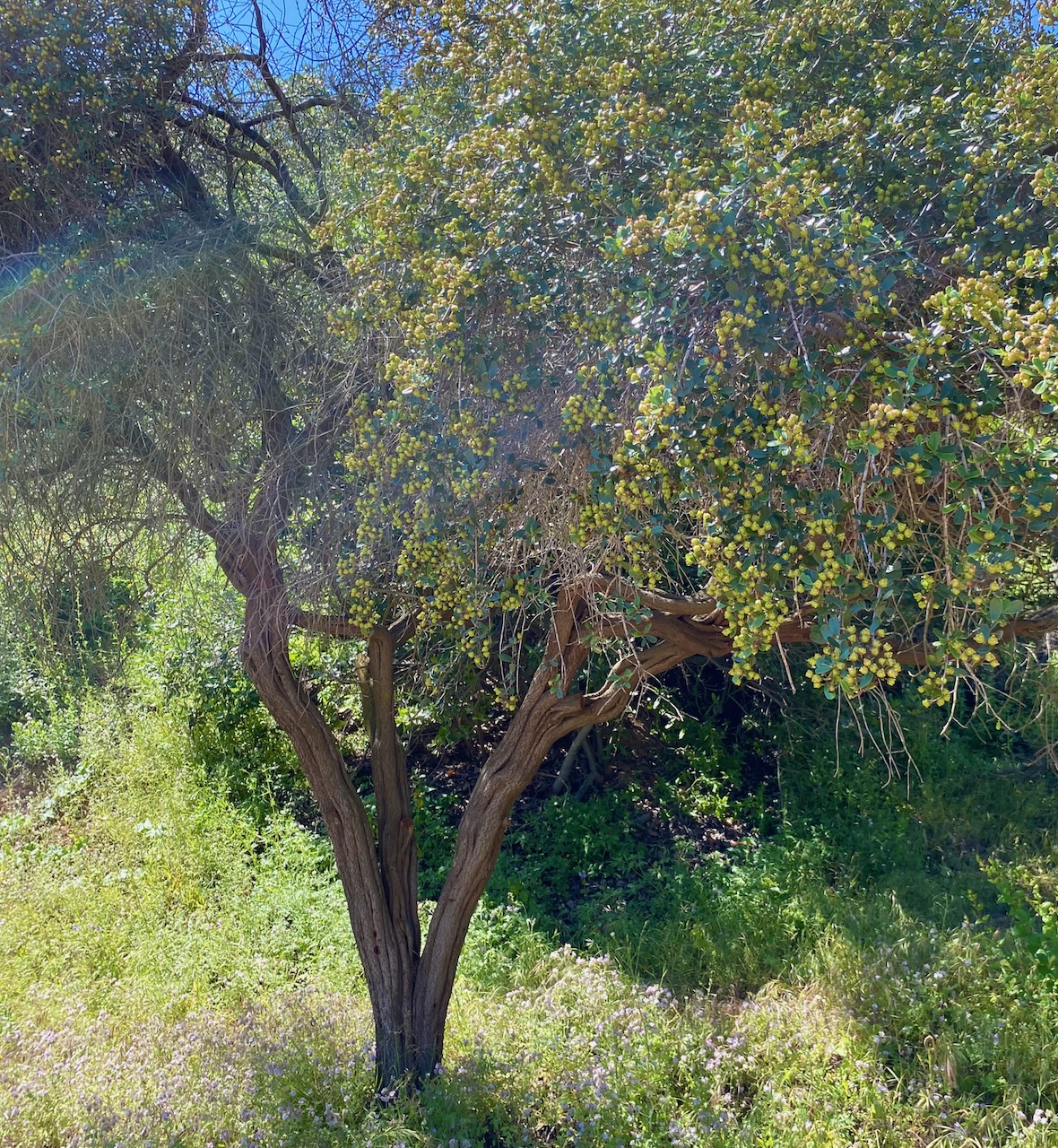
Anthropogenic Impacts
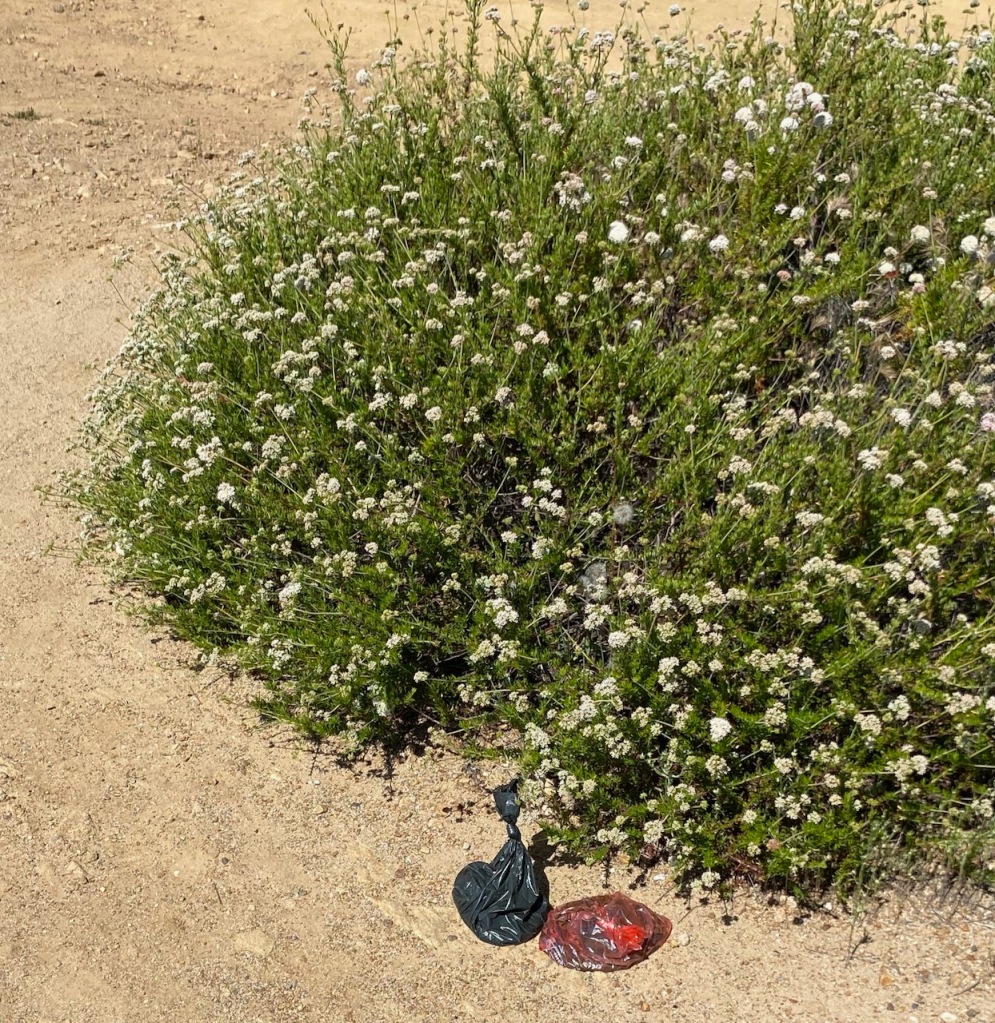
Bisecting the plant community, the fire roads themselves were very wide and looked to be recently maintained. They were very wide with few passersby. I encountered only a handful of trail runners (no fellow hikers) and as many mountain bikers. All in all, given it was a mid-weekday, the trail was quiet and open with not much in the way of human congestion. One thing worth mentioning is the impact of humans as a good many animal/nature lovers leaving bags of dog excrement along the path. As a user of the trail, I suppose I’m grateful that the dog owners harvested the poop and put it in the proper bright-colored bag. But I’m confused as to why they would leave it on the trail in plain sight of any passerby. I suppose people just don’t get the concept of “leave no trace” when it comes to walking their dog.
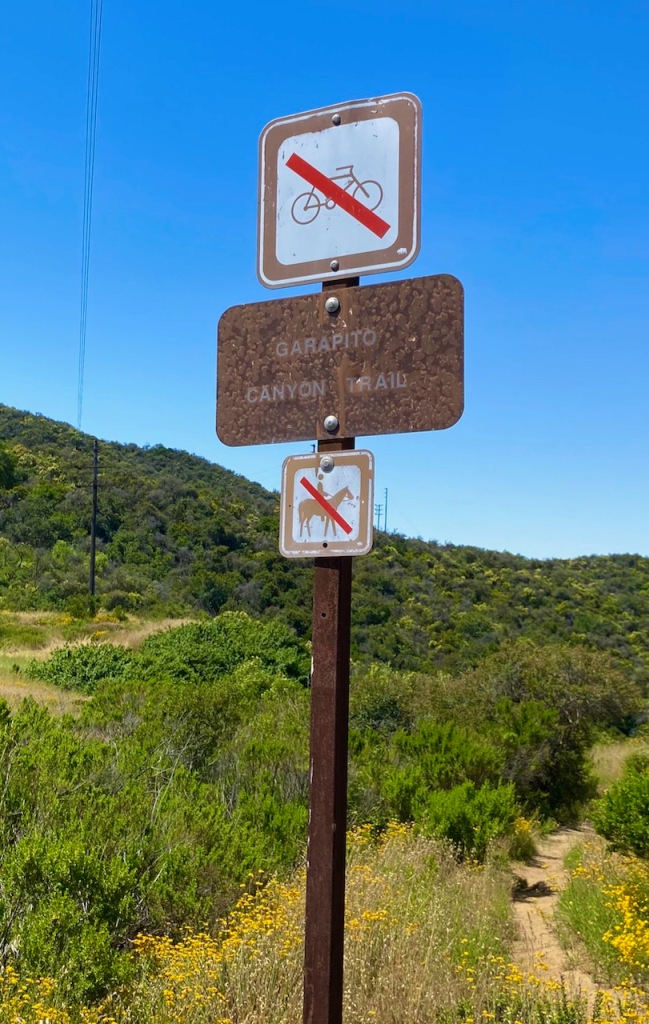
Garapito Canyon Trail
At this point in the journey, I arrived at Garapito Canyon trailhead, which was about a mile and a half from the parking lot. This path wasn’t on my original trek plan, but seeing the return trail to Mulholland Road was closed (parts had washed out making it impassible) I choose to instead investigate down into the canyon.
The path down follows a narrow trail that parallels a creek seep from the top of the hill creating a very narrow slot canyon. The footpath is very overgrown with encroaching grasses and mustard plants. Many of the plants along the side of the trail were mature and lush, except for the grasses and mustard at the start of the path. My guess is the top was the victim of fire road rehab with a mass of disturbed soil and no replanting. Nevertheless, once into the canyon, the native plants proved to be a great delight of tightly growing habitat along a slow-flowing creek with several small crossings as the trail wound its way downwards.
Some of the more interesting finds along the Garapito trail were several tall Sycamores jutting up from the floor of the creek bed. In one spot, a tall sycamore grew alongside a tall toyon as though the two were in a symbiotic competition towards the sunlight above. A short distance further, a colony of hummingbird sage (Salvia spathacea) huddled under another sycamore. It was an absolute delight to stumble across it in situ, under a shady canopy on a very quiet trail. Another surprise was a very mature colony of wavy-leafed soap plants (Chlorogalum pomeridianum), some about to bloom—just along the trail. In total, I counted 19 plants in this colony of various ages, each looking haggard, but happy and growing well in the space. The ones ready to flower had stalks nearly 5 feet in height and flowers just days from opening.
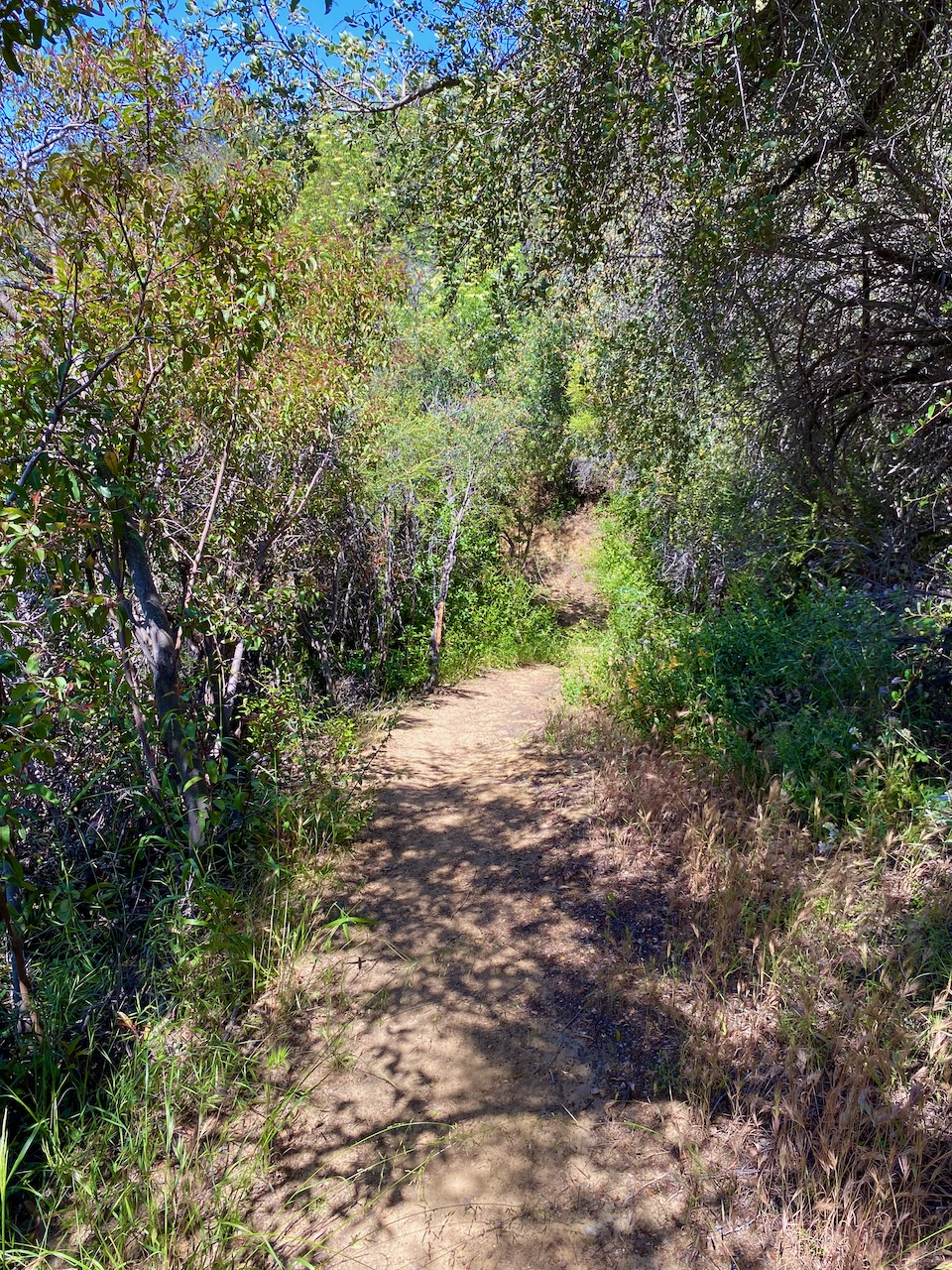

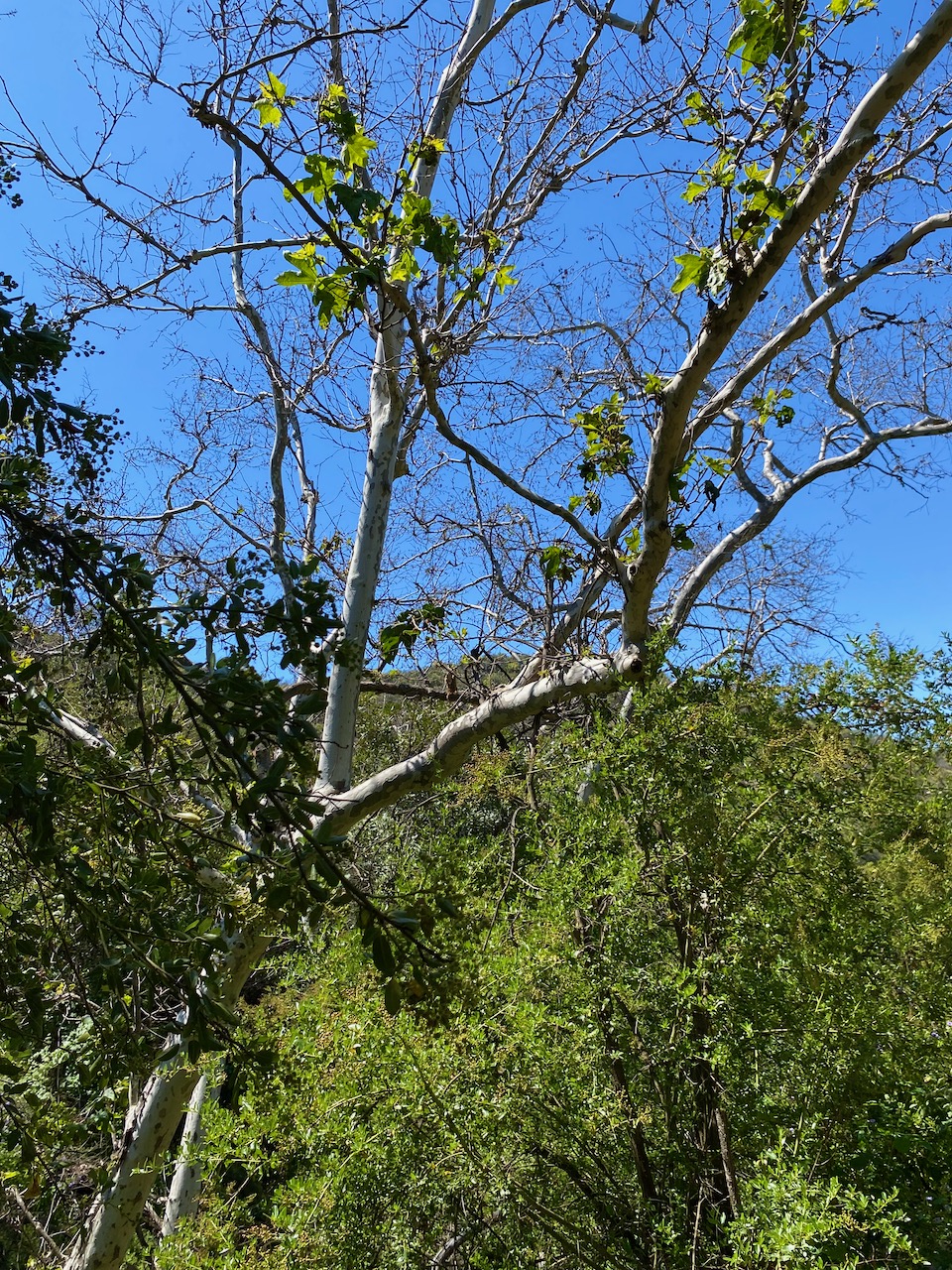
Not only was the trail full of plant life, but so too did it team with an abundance of birds and insects. Of note, I recorded several butterflies (more checkerspots, orange tips, and Bernadino Blue) but also orange wing grasshoppers, Pacific velvet ants, towee birds, and woodpeckers. It was further evident that, in the grasses along the trail edges, some larger mammals pressed their way through making some large transit paths and littering the trail edge with scat. I even happened upon the slithering S track of a snake freshly crossing the fire road above.
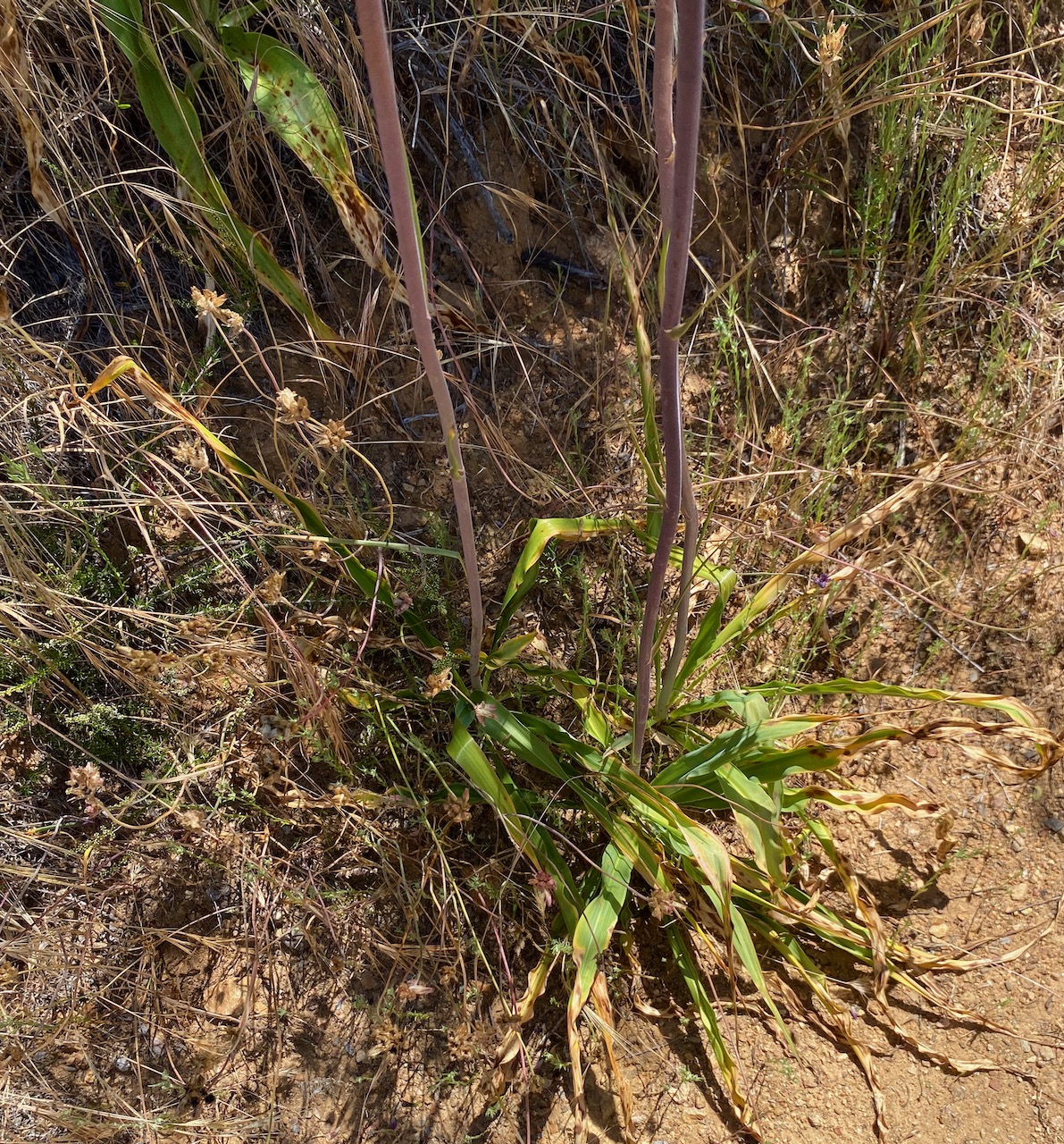
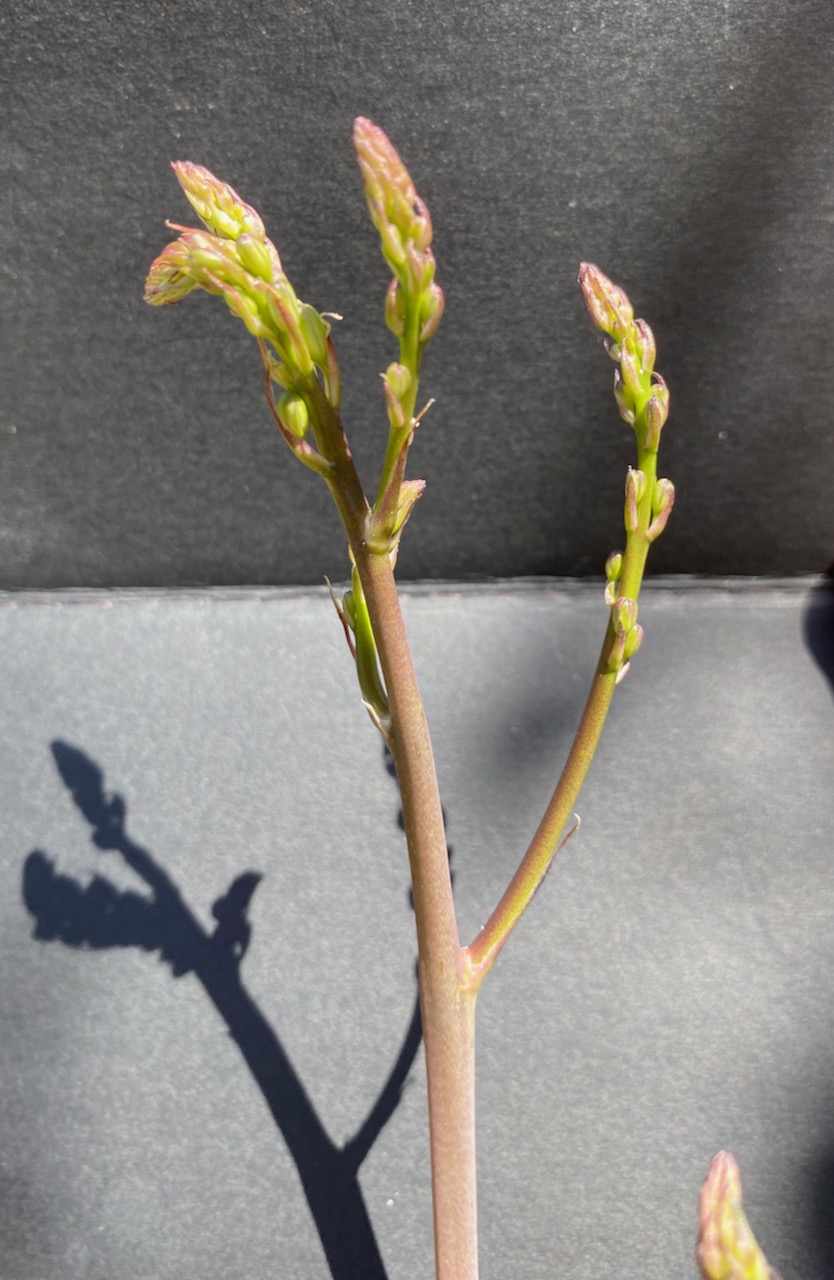
It was at this point, about halfway into the trail that I made my way back up the trail to the start of my journey. The sun was nearing its zenith and bringing with it the heat. Exploring just a few detours back to the front, I spent some time at the park entrance reading the signage on the history of the space and ended my excursion sitting at a picnic table enjoying the cool breeze flowing under the shade of a tree.
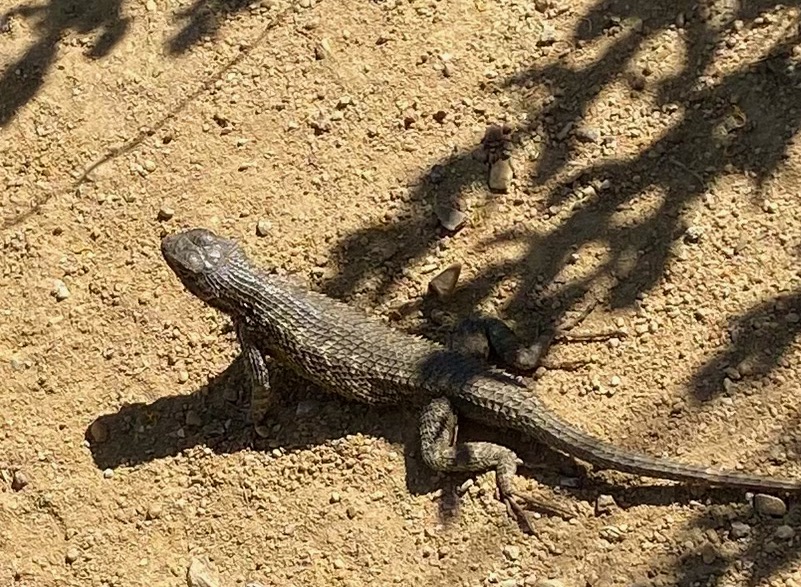
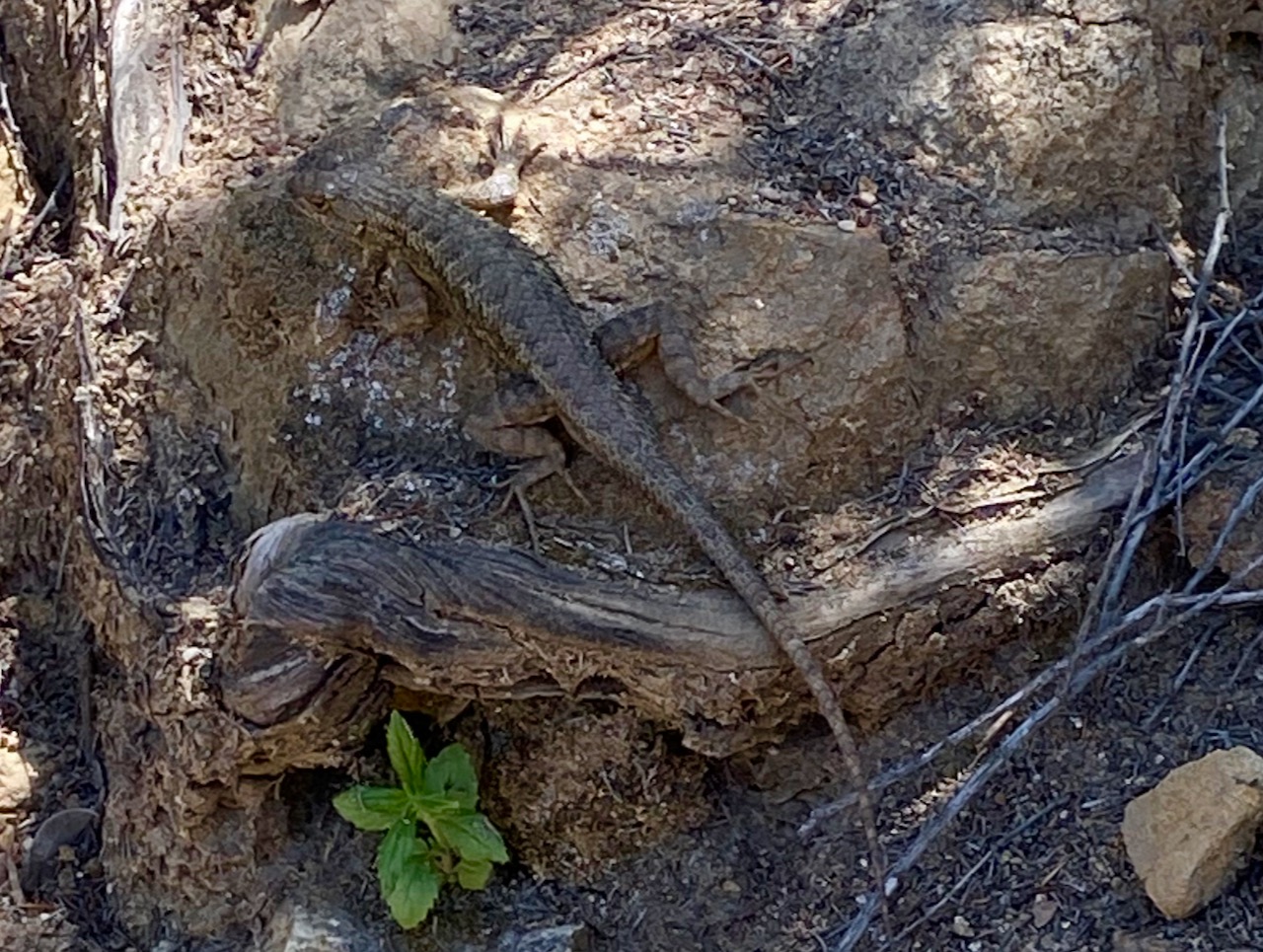
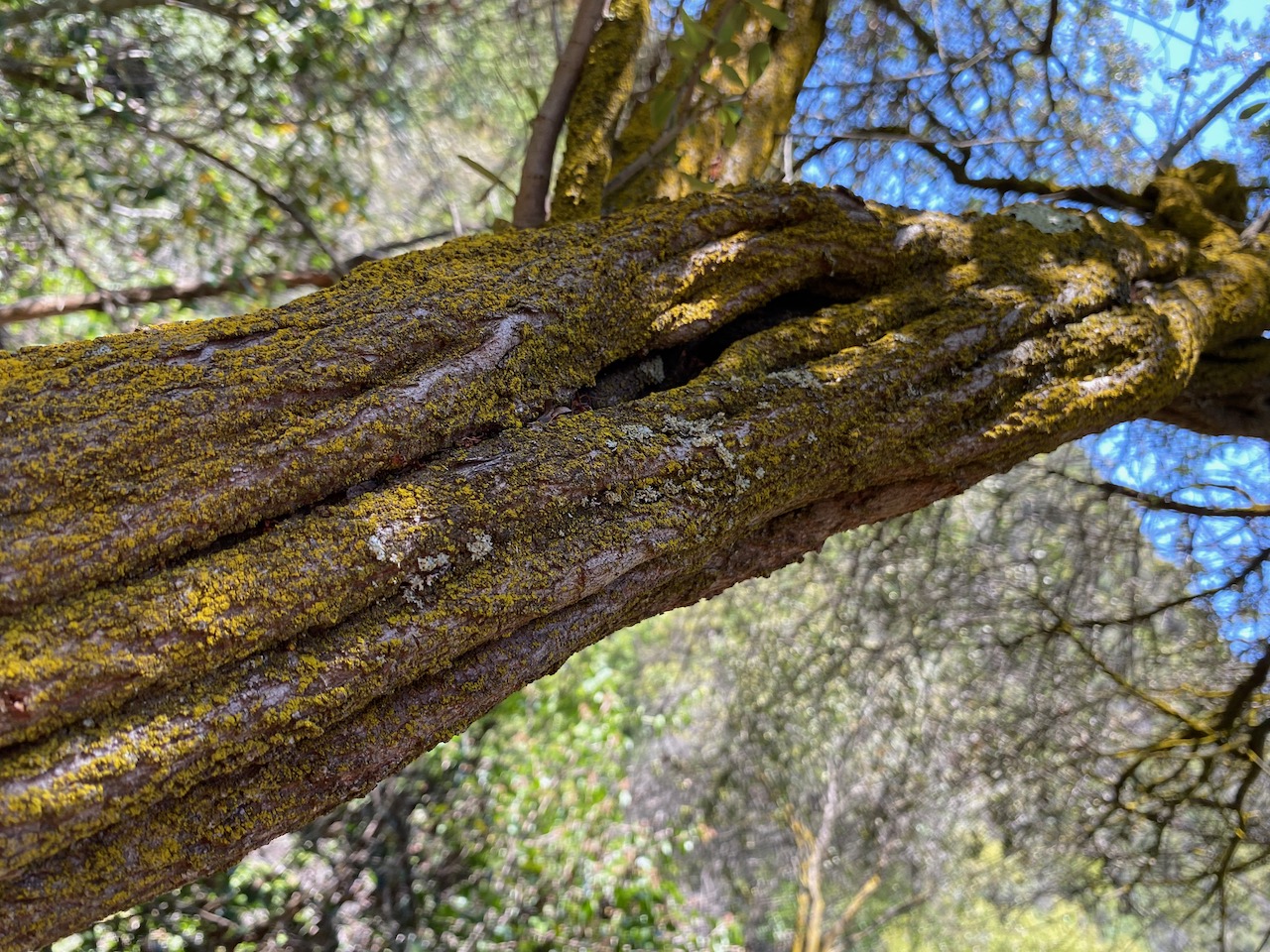
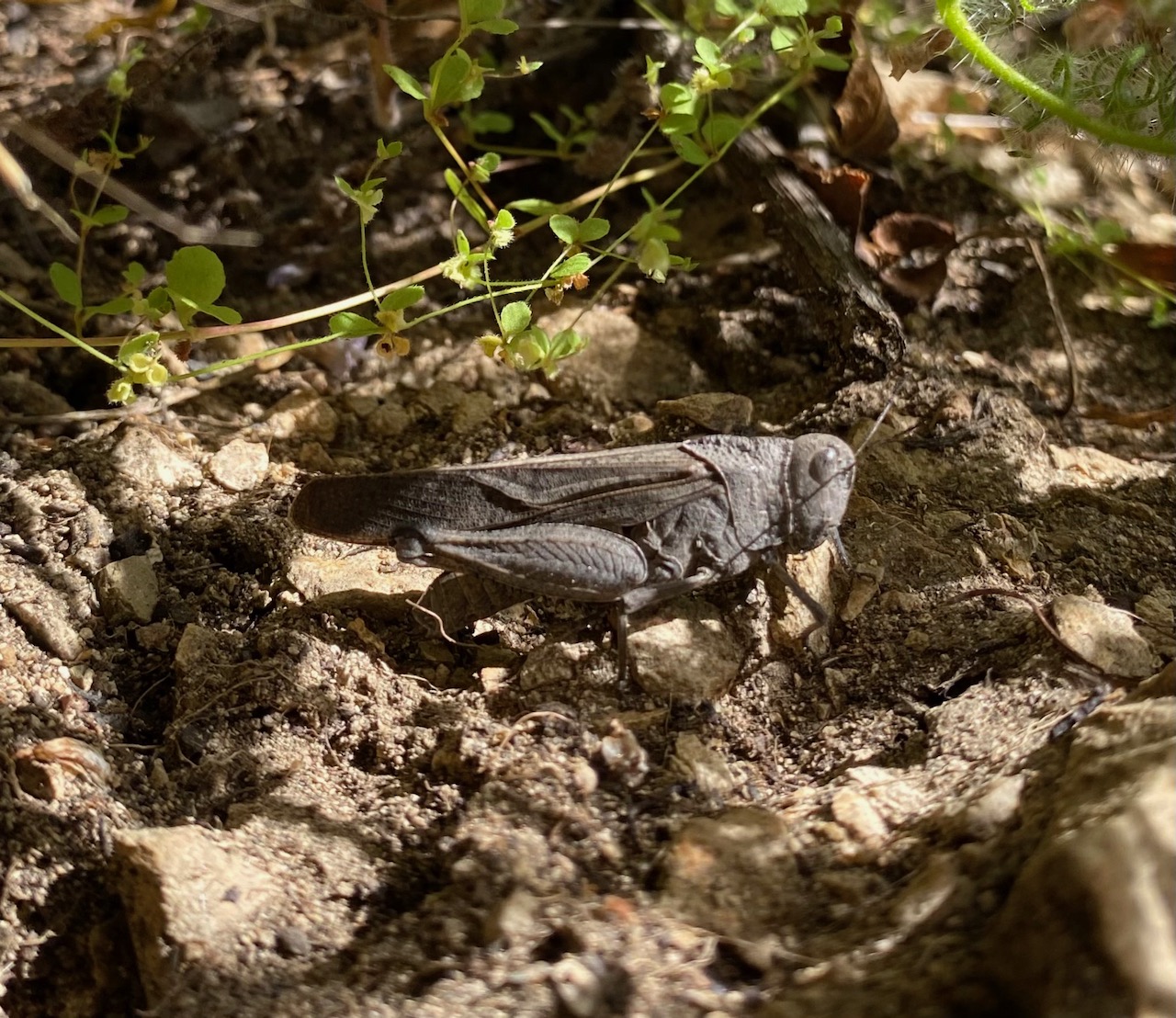
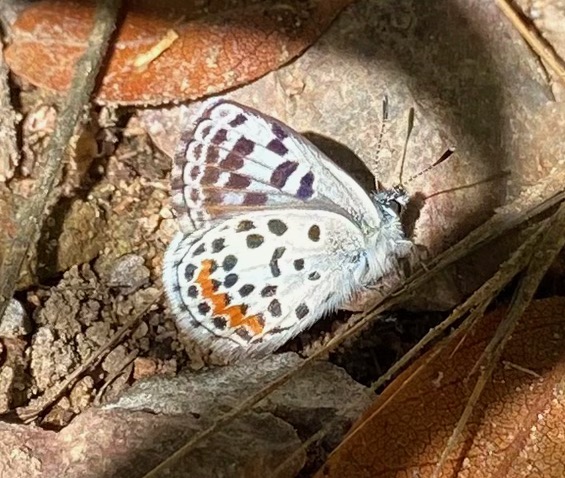
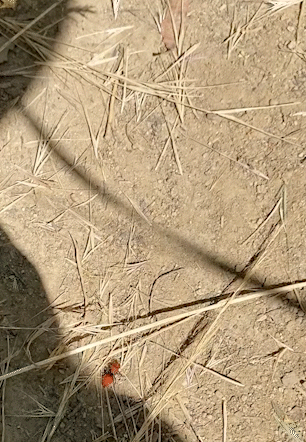
Field Observations
- Discarded bags of dog poop (several).
- Walkers/Trail runners.
- Mountain Bicyclists.
- MRCA work crews (very friendly).
- Lots of butterflies, lizards, mustard, and invasive grasses.
- Wide and well-groomed fire roads.
Observed Species
- Poison Oak – Toxicodendron diversilobum
- Coast Live Oaks – Quercus agrifolia
- Western Sycamore – Platanus racemose
- Toyon – Heteromeles arbutifolia
- Lemonade Berry – Rhus integrifolia
- Sugar Bush – Rhus ovata
- Wavy-leafed soap plant – Chlorogalum pomeridianum
- Black sage – Salvia mellifera
- Southern Bush Monkeyflower – Diplacus longiflorus
- Chaparral yucca – Hesperoyucca whipplei
- Twining Snapdragon – antirrhinum kelloggii
- Cliff Aster – Malacothrix saxatilis
- Parish nightshade – Solanum xanti
- Deerweed – Acmispon glaber
- Mahogany Jerusalem Cricket
- Orangetips butterflies – Anthocharis cardamines
- Bernardino Blue butterfly – Euphilotes bernardino
- Pacific velvet ant – dasymutilla aureola
- Silverpuffs – Uropappus Uropappus lindleyi
- California Orange Winged Grasshopper – Arphia ramona
- Hummingbird sage – Salvia spathacea
- Chamise (greasewood) – Adenostoma fasciculatum
- California Sage – Artemisia californica
- Rock Phacelia – Phacelia californica
- or could be Mountain Phacelia – Phacelia imbricata ssp. imbricata
- Buckwheat – Eriogonum fasciculatum
- Maltese Star Thistle – Centaurea melitensis
- Annual yellow sweetclover – melilotus indicus
- Hairy ceanothus – Ceanothus oliganthus
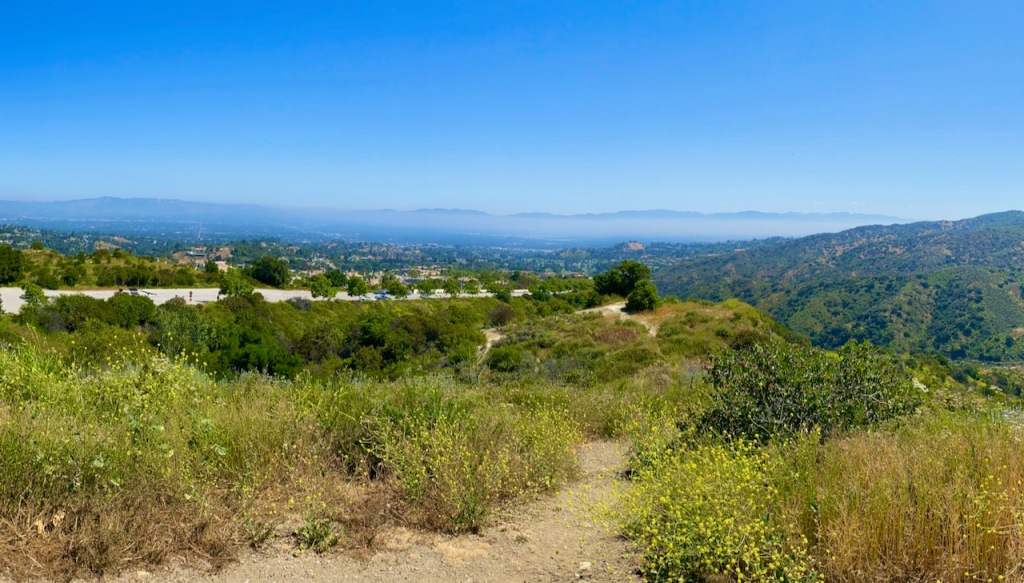
3 responses to “Observing the Marvin Braude Mulholland Gateway Park and Garapito Canyon Trail”
[…] Near the end of the excursion on the return back, I happened upon a snake that was as spooked at my appearance as I was at his, disappearing into the grass and brush faster than I could to get a good look at it. Its presence reminded me of the fresh snake trail I encountered at the Marvin Braude Gateway trail. […]
LikeLike
[…] say if this was normal for a weekday for the space, but by comparison with similar spaces like the Marvin Braude and the Upper Las Virgenes Canyon, the Placerita Canyon trail was empty and very easy to […]
LikeLike
[…] One of the most critical roles of local native plant nurseries is the preservation of native ecosystems. Los Angeles County boasts a rich diversity of plant species, many of which are unique to the region. However, rampant urban development and invasive species threaten the very existence of these ecosystems. Native plant nurseries are instrumental in cultivating and propagating indigenous plants, ensuring their survival in the face of these challenges. Most source locally and grow from seed plants growing on the edges of the San Fernando Valley in the Santa Monica Mountains and Santa Susanna Mountains. Bonus: if you’re into hiking, you can see many of these native plants in the ecosystems where they naturally occur. In particular in Placerita Canyon, the Las Virgenes Open Space and the Santa Monica Mountains. […]
LikeLike